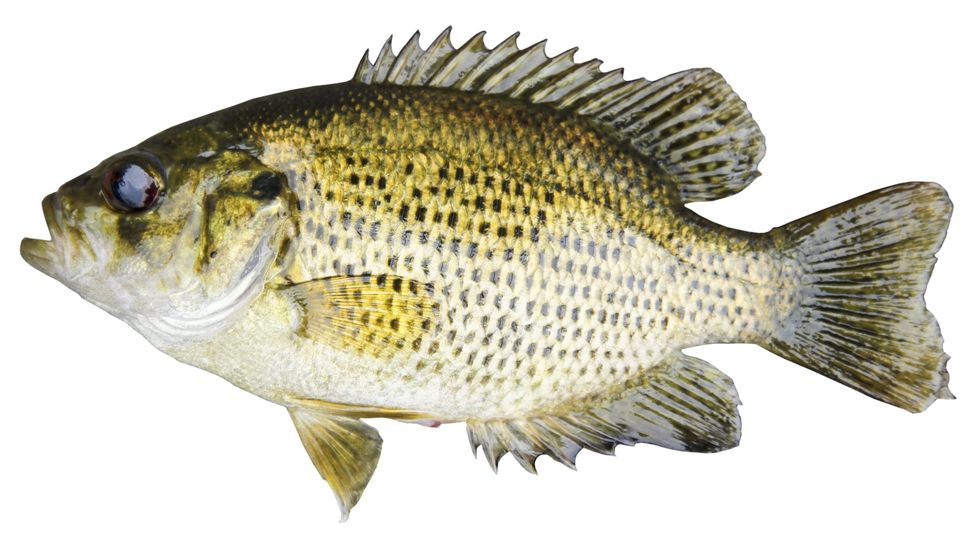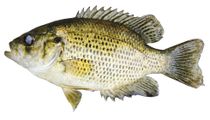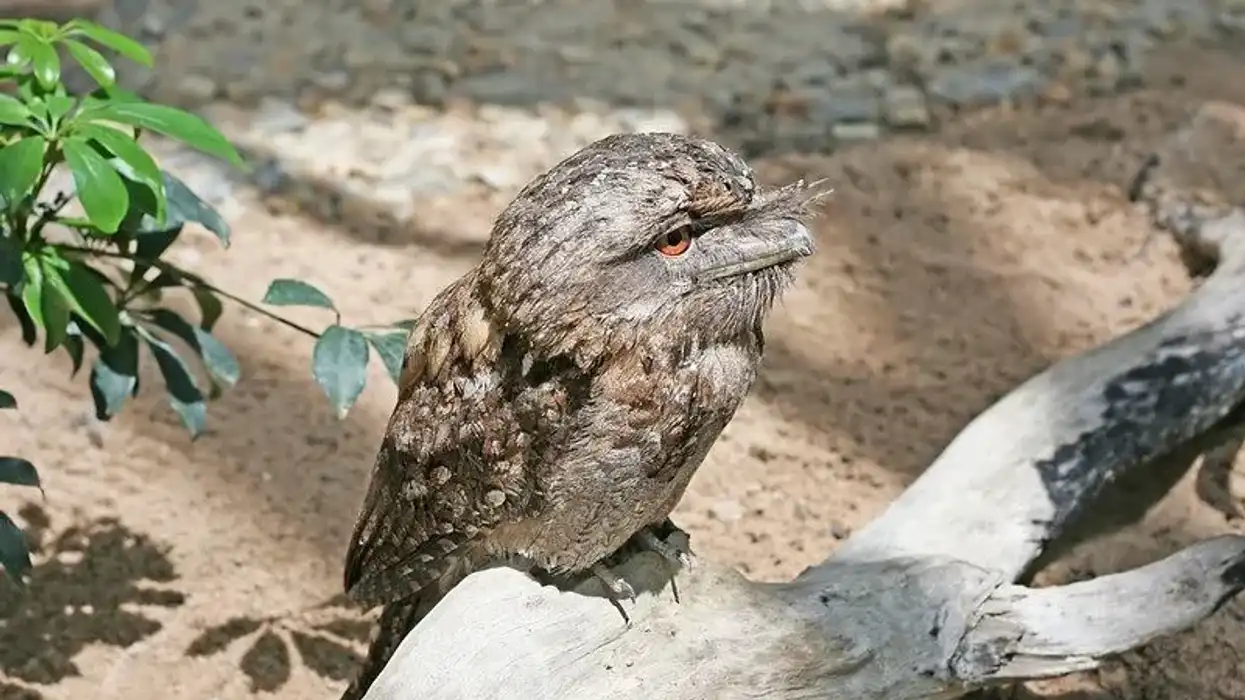Warmouth (Lepomis gulosus) are a fish belonging to the sunfish family. They have many common names, but, like rock bass and shadow bass, they are mostly known as goggle-eye fishes.
Adult warmouths are generally omnivores, but a warmouth’s diet is mainly carnivorous as they feed on small fishes and insects. Warmouths can be easily confused with rock bass, but warmouths have six anal fins, which are one physical characteristic that is different from the rock bass.
Warmouths have a mouth that is two times larger as compared to other sunfishes. This allows them to prey on large fishes.
Adult warmouths prefer habitats in deeper waters, and all other warmouths along with their nests move deeper in the ocean as the temperature rises. They tend to habitat in turbid, muddy water where there is ample vegetation and dense cover.
After reading these facts about the Warmouth bass fish, you may also look at chum salmon facts and herring facts.
Warmouth Interesting Facts
What type of animal is a warmouth?
Warmouth bass is a freshwater fish, which are found throughout the United States. They can be found in open streams, swamps, rivers, and lakes. Warmouths are often confused with other sunfishes like the rock bass or the green sunfish. Warmouths are highly adaptable and can live in multiple habitats. They are native to North America.
What class of animal does a warmouth belong to?
Warmouth bass is a fish belonging to the class of ray-finned fishes. This goggle eye fish can be found in areas where the water is muddy and sluggish and is covered in natural debris of wood and leaves, providing thick cover for the juveniles to hide.
Even though they are larger than most of the sunfishes they are hunted down by sea turtles, snakes, and larger fishes.
How many warmouth are there in the world?
The conservation status of the warmouth bass is considered to be of the Least Concern which suggests that the number of warmouths is more than sufficient. The strategy of warmouths to adapt to multiple habitats helps their population to grow.
Where does a warmouth live?
Warmouths are freshwater fishes and can live in open streams like the ocean and sea, they can also be found in swamps, lakes, and rivers where the water is sluggish. Even though they are freshwater fishes, they prefer habitats in turbid waters with abundant vegetation covered in woody debris.
What is a warmouth's habitat?
Warmouth habitats are spread across multiple locations. When the weather becomes very hot, warmouths move to the muddy bottoms of the water and dig holes to cool themselves down.
Adult warmouths prefer living in deep waters while other warmouths can be found in shallow waters like lakes and ponds. Dense weed beds and soft bottoms are the preferred habitats of a warmouth bass.
Who do warmouths live with?
Warmouths are sunfishes that are similar in appearance to bluegills and redbreasts. Female warmouths, after laying eggs in the nest spawned by both the male and the female, spawn with multiple partners. The nest is then protected by the male and after the eggs are hatched, the males leave the juveniles by themselves to feed and survive.
How long does a warmouth live?
The average lifespan of a warmouth bass is three years, but they can live the maximum lifespan of eight years. Warmouth sunfishes can survive in multiple habitats like freshwater and turbid water, where there are dense weed beds and slow moving streams.
These sunfish family fishes are mostly killed by fishermen and other predators like large fishes, turtles, and sea animals like snakes and seals.
How do they reproduce?
The females mate with other male warmouths during the spawning period, which occurs in April and ends in May. The males like spawning their nest, and the females are attracted to the bright coloration displayed by the males.
Warmouths naturally crossbreed with other species of sunfishes like bluegills and green sunfish.
Both the males and females take part in spawning the nest, and after the female lays the eggs, she leaves to mate with other males. The nest is guarded aggressively by the male warmouth, who fights against any intruder who tries to attack the nest.
What is their conservation status?
The conservation status of the warmouth fish is listed as Least Concern. Warmouths are found all across the United States and in multiple locations due to their ability to adapt to different living conditions. This sunfish does not swim with groups and mostly lives as a solitary creature.
Warmouth Fun Facts
What do warmouths look like?
A warmouth body is golden brown, mottled brown, or olive green in color. The sunfish have a stout body and six anal fins. Three to five reddish-brown streaks, or waves, are placed near the eye.
The belly of the warmouth is usually golden in color with some spots of brown. There are three spines on the anal fin ray.
The males display a bright-orange sport at the base of their dorsal fin, which the females often find attractive during the breeding period. They are covered in multiple yellow markings. The warmouth bass have a large mouth, big eyes, and small teeth on the tongue.
How cute are they?
Warmouths are not cute as they do not have warm colors or any other trait which makes them cute. Their large mouth and spiked fins do not make them cute.
How do they communicate?
During the breeding period, the bodies of the male warmouth fishes turn yellow, and their eyes turn red. The females are attracted to their bright colors and continue spawning the nest together.
How big is a warmouth?
The warmouth sunfish is twice the size of other sunfish. The average length of warmouth is 4-10 in (10-25 cm). They are often confused with bluegills and green sunfishes with whom they naturally breed in the water.
How fast can a warmouth swim?
They are slow-moving sunfishes. They can survive in polluted water bodies where the oxygen level is minimal, unlike other species of sunfishes. Their attacks are swift, and they hide quickly from their predators. They belong to the category of ambush predators, hiding behind the rocks and then hunting down their prey.
How much does a warmouth weigh?
The average weight of a warmouth fish is 2.25 lb (1 kg).
What are the male and female names of the species?
The male and the female warmouths do not have specific names.
What would you call a baby warmouth?
Baby warmouths do not have a particular name.
What do they eat?
Warmouths are omnivore sunfishes. Warmouth diet includes mollusks, zooplanktons, insects and small fishes.
Are they dangerous?
No, warmouths are not dangerous, but all species of the sunfish family are aggressive in nature, and many incidents of sunfish biting swimmers have been recorded. Although they can bite human beings, they don't pose much danger to human beings.
Would they make a good pet?
Yes, warmouth can make a good pet fish as long as it is provided with a long aquarium and oxygen supply. They are solitary fishes and do not live in groups.
Did you know...
The warmouth fish has 16 common names in total. It was first discovered in New Orleans in the year 1829. They have a purple tint all over their body.
The female warmouths are usually smaller in size than the male warmouths. They have tasty meat when caught in freshwater. They work on their hiding mechanism when they are bored and are not involved in any other activity.
You can catch a warmouth by fishing.
Do warmouth have teeth?
Warmouths have teeth on their tongue. Their mouth is twice the size of any other sunfish, which allows them to feed on large fishes.
Do people eat warmouth?
Yes, warmouth fishing is popular in the United States. The meat is tasty to devour when the fish is caught from a freshwater body. The scales are removed first, and the fish is cleaned by washing with water. The meat is cooked by deep-frying in hot oil.
Here at Kidadl, we have carefully created lots of interesting family-friendly animal facts for everyone to discover! Learn more about some other fish including tetra, or tang fish.
You can even occupy yourself at home by drawing one of our Warmouths coloring pages.










